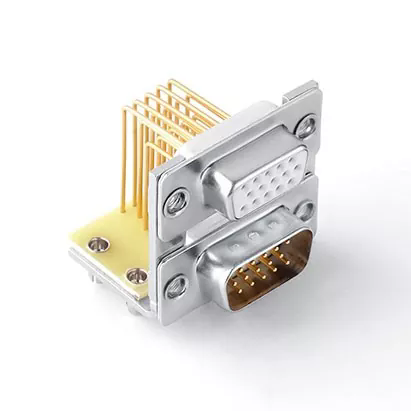D-Sub Connectors: A Reliable Interface for Data and Power Transmission
2025-03-14
In the world of electronic connectors, D-Sub connectors (short for D-Subminiature connectors) have remained a trusted and widely used interface for decades. These connectors are known for their robust design, versatility, and ability to transmit both data and power in various industries, including computing, telecommunications, industrial automation, and aerospace.
In this blog, we will explore what D-Sub connectors are, their types, applications, and why they continue to be an essential component in modern electronics.
What is a D-Sub Connector?
A D-Sub connector is an electrical connector that features a D-shaped metal shield and multiple pins arranged in parallel rows. The D-shape ensures correct orientation and provides mechanical stability, reducing the risk of incorrect insertion.
D-Sub connectors come in different sizes and configurations, with common options ranging from 9 to 50 pins. Some versions also include high-density pin arrangements for enhanced connectivity.
Common Types of D-Sub Connectors
D-Sub connectors are classified based on pin count and arrangement. Here are the most commonly used types:
1. Standard D-Sub Connectors
Available in 9, 15, 25, 37, and 50-pin configurations
Used for serial and parallel data communication
Found in computers, industrial equipment, and communication devices
2. High-Density D-Sub Connectors
Features more pins in the same shell size
Available in 15, 26, 44, 62, and 78-pin versions
Ideal for applications requiring compact yet high-performance connections
3. Waterproof D-Sub Connectors
Designed with sealed enclosures to protect against dust, moisture, and harsh environments
Commonly used in outdoor equipment and industrial machinery
4. D-Sub Power Connectors
Combines power and signal contacts in one connector
Supports high-current applications in automotive, aerospace, and medical devices
5. Combination D-Sub Connectors
Mixes coaxial, high-power, and signal contacts in a single connector
Provides flexibility for custom applications in defense, automation, and broadcasting
Applications of D-Sub Connectors
D-Sub connectors are used across a wide range of industries due to their reliability and adaptability. Some of their key applications include:
Computer & IT Equipment – Used in legacy serial (RS-232) and parallel port connections for printers, monitors, and networking devices.
Aerospace & Defense – Provides secure and stable connections for radar systems, avionics, and military-grade communication devices.
Industrial Automation – Ensures reliable data and power transmission for CNC machines, robotics, and control panels.
Automotive & Transportation – Used in engine control units (ECUs), diagnostic tools, and vehicle monitoring systems.
Telecommunications – Supports high-speed data transmission for networking hardware and broadcasting equipment.
Why Are D-Sub Connectors Still Relevant Today?
Despite the rise of modern connectors like USB and HDMI, D-Sub connectors remain a popular choice in many industries. Here’s why:
Durability & Mechanical Strength – The metal shell and secure fastening system (screws or clips) provide long-lasting and vibration-resistant connections.
Versatility – Available in various pin counts, configurations, and shielding options for different applications.
High-Quality Signal Transmission – Provides low-interference connectivity, making it ideal for critical data transmission in industrial and aerospace sectors.
Legacy Compatibility – Many older systems still rely on RS-232, VGA, and parallel interfaces, making D-Sub connectors a necessary component.
Customizable Options – Combination D-Sub connectors allow integration of signal, power, and coaxial contacts in a single interface.
Conclusion
D-Sub connectors continue to be a reliable and durable solution for data and power transmission in industrial, computing, automotive, and aerospace applications. Their robust design, secure connections, and adaptability make them a trusted choice even as newer technologies emerge.
If you’re looking for high-quality D-Sub connectors for your projects, be sure to consider pin configuration, durability, and shielding requirements to find the right fit.



